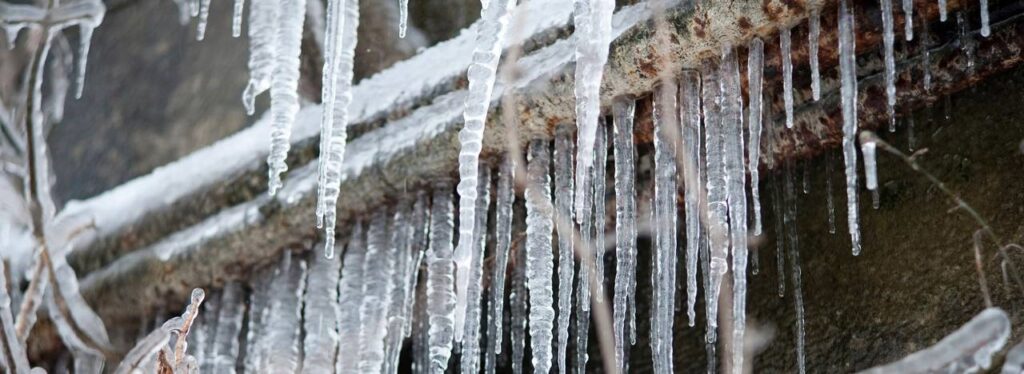Shielding Your Pipes from Cold Weather Damage: Critical Strategies
Shielding Your Pipes from Cold Weather Damage: Critical Strategies
Blog Article
They are making a few great pointers related to How To Avoid Freezing Pipes as a whole in the article directly below.

Winter can wreak havoc on your pipes, particularly by freezing pipelines. Here's exactly how to prevent it from occurring and what to do if it does.
Intro
As temperatures decrease, the threat of frozen pipelines rises, potentially causing pricey repair work and water damages. Recognizing how to avoid icy pipelines is essential for home owners in cold climates.
Avoidance Tips
Insulating at risk pipelines
Cover pipes in insulation sleeves or use warmth tape to safeguard them from freezing temperatures. Focus on pipelines in unheated or outside areas of the home.
Heating methods
Maintain indoor spaces properly warmed, especially areas with plumbing. Open cupboard doors to enable cozy air to flow around pipelines under sinks.
Just how to recognize icy pipelines
Seek lowered water circulation from taps, uncommon odors or noises from pipes, and noticeable frost on revealed pipelines.
Long-Term Solutions
Architectural modifications
Think about rerouting pipes far from outside walls or unheated areas. Include additional insulation to attics, basements, and crawl spaces.
Updating insulation
Purchase premium insulation for pipes, attic rooms, and walls. Correct insulation assists maintain regular temperatures and lowers the danger of icy pipes.
Protecting Outside Pipes
Yard hoses and outside taps
Separate and drain pipes garden hose pipes prior to winter months. Install frost-proof spigots or cover outdoor faucets with protected caps.
Recognizing Icy Pipelines
What creates pipelines to ice up?
Pipelines ice up when exposed to temperature levels below 32 ° F (0 ° C) for expanded durations. As water inside the pipelines freezes, it broadens, taxing the pipeline walls and possibly triggering them to burst.
Risks and damages
Icy pipes can lead to water system disruptions, residential or commercial property damages, and expensive repair work. Burst pipelines can flooding homes and create comprehensive architectural damage.
Signs of Frozen Pipeline
Identifying icy pipelines early can prevent them from bursting.
What to Do If Your Pipes Freeze
Immediate actions to take
If you believe icy pipelines, keep faucets open to alleviate pressure as the ice thaws. Utilize a hairdryer or towels soaked in warm water to thaw pipelines slowly.
Conclusion
Protecting against icy pipes calls for positive measures and fast reactions. By understanding the reasons, signs, and safety nets, property owners can shield their plumbing throughout cold weather.
5 Ways to Prevent Frozen Pipes
Drain Outdoor Faucets and Disconnect Hoses
First, close the shut-off valve that controls the flow of water in the pipe to your outdoor faucet. Then, head outside to disconnect and drain your hose and open the outdoor faucet to allow the water to completely drain out of the line. Turn off the faucet when done. Finally, head back to the shut-off valve and drain the remaining water inside the pipe into a bucket or container. Additionally, if you have a home irrigation system, you should consider hiring an expert to clear the system of water each year.
Insulate Pipes
One of the best and most cost-effective methods for preventing frozen water pipes is to wrap your pipes with insulation. This is especially important for areas in your home that aren’t exposed to heat, such as an attic. We suggest using foam sleeves, which can typically be found at your local hardware store.
Keep Heat Running at 65
Your pipes are located inside your walls, and the temperature there is much colder than the rest of the house. To prevent your pipes from freezing, The Insurance Information Institute suggests that you keep your home heated to at least 65 degrees, even when traveling. You may want to invest in smart devices that can keep an eye on the temperature in your home while you’re away.
Leave Water Dripping
Moving water — even a small trickle — can prevent ice from forming inside your pipes. When freezing temps are imminent, start a drip of water from all faucets that serve exposed pipes. Leaving a few faucets running will also help relieve pressure inside the pipes and help prevent a rupture if the water inside freezes.
Open Cupboard Doors
Warm your kitchen and bathroom pipes by opening cupboards and vanities. You should also leave your interior doors ajar to help warm air circulate evenly throughout your home.

As a devoted reader about How To Avoid Freezing Pipes, I imagined sharing that excerpt was a great idea. Sharing is nice. One never knows, you could be doing someone a favor. Thanks a lot for being here. Revisit us soon.
Check It Out Report this page